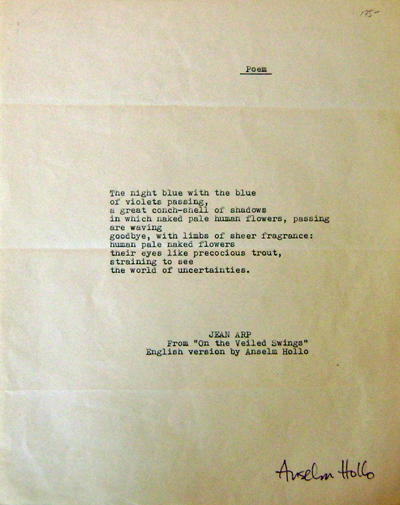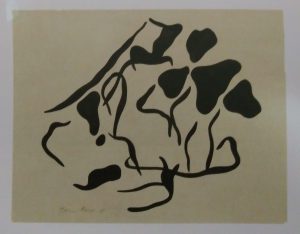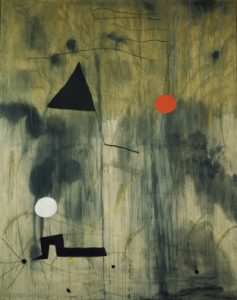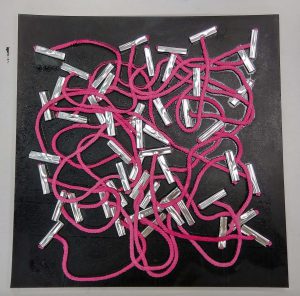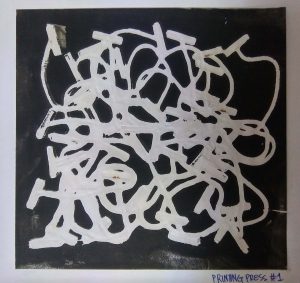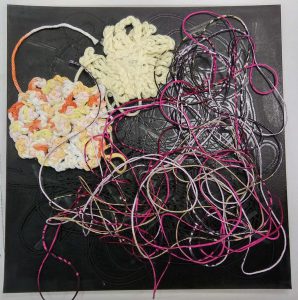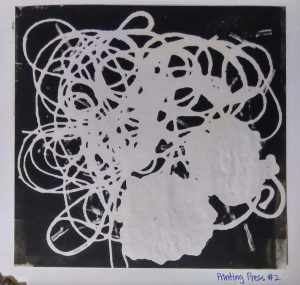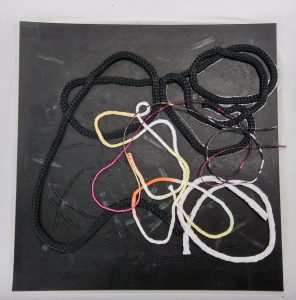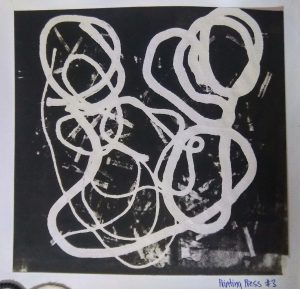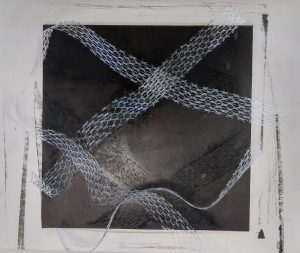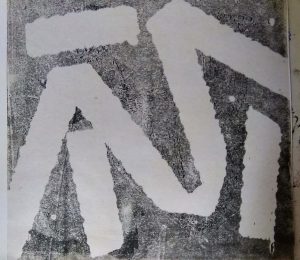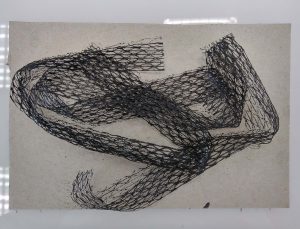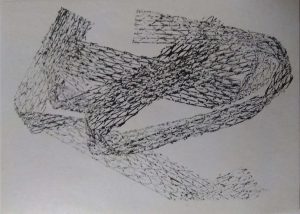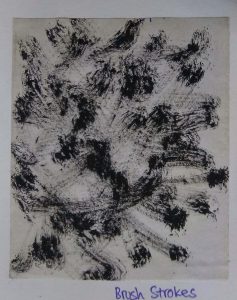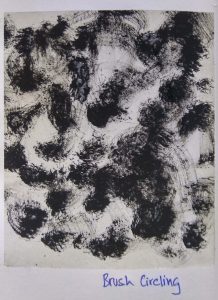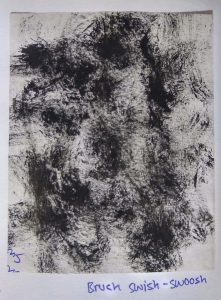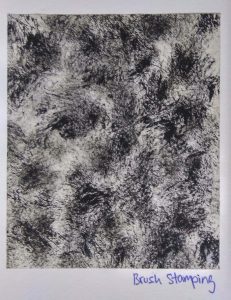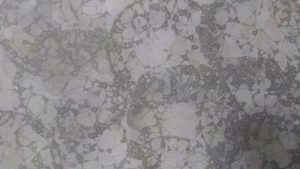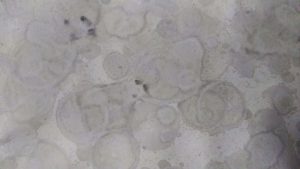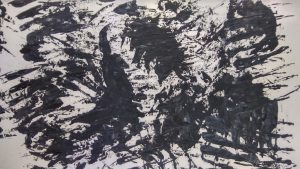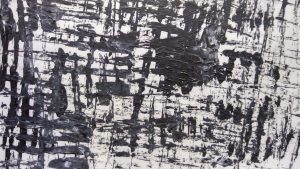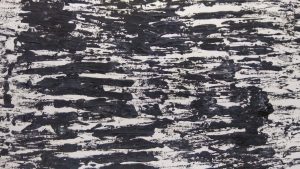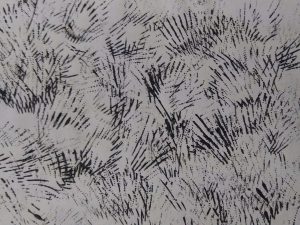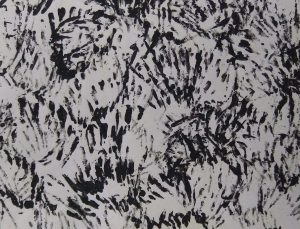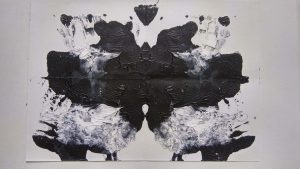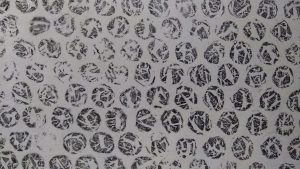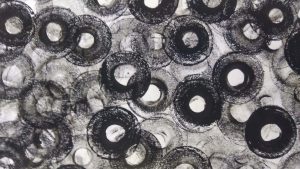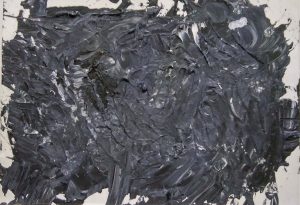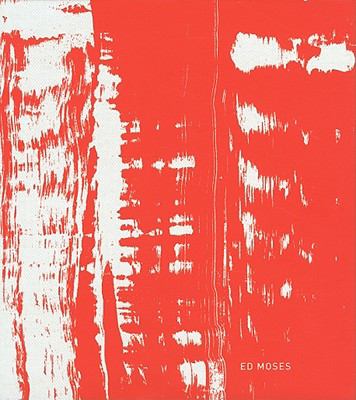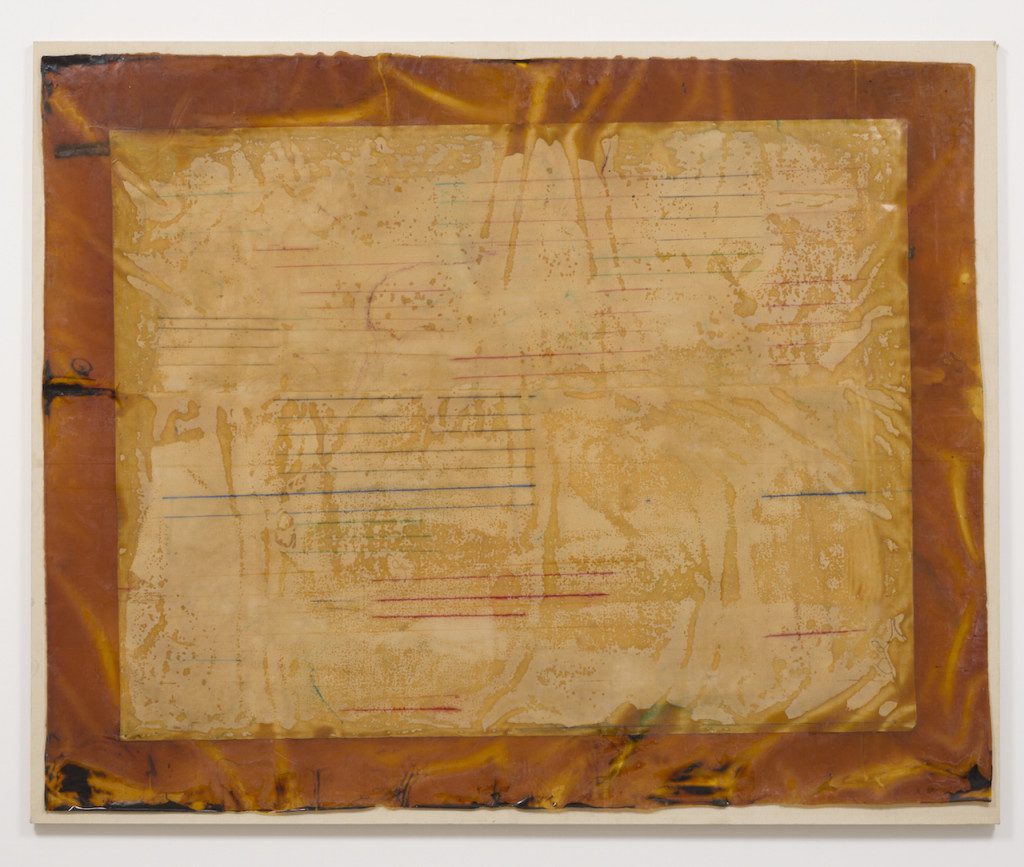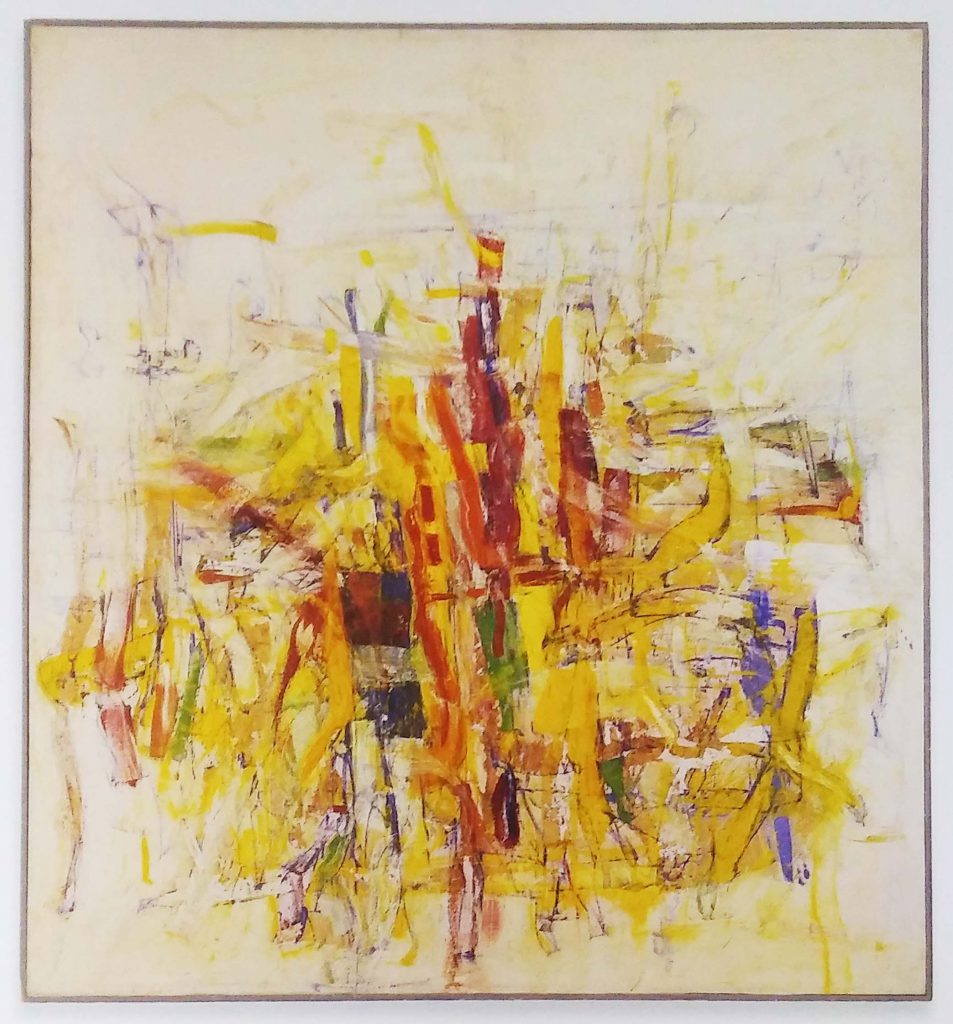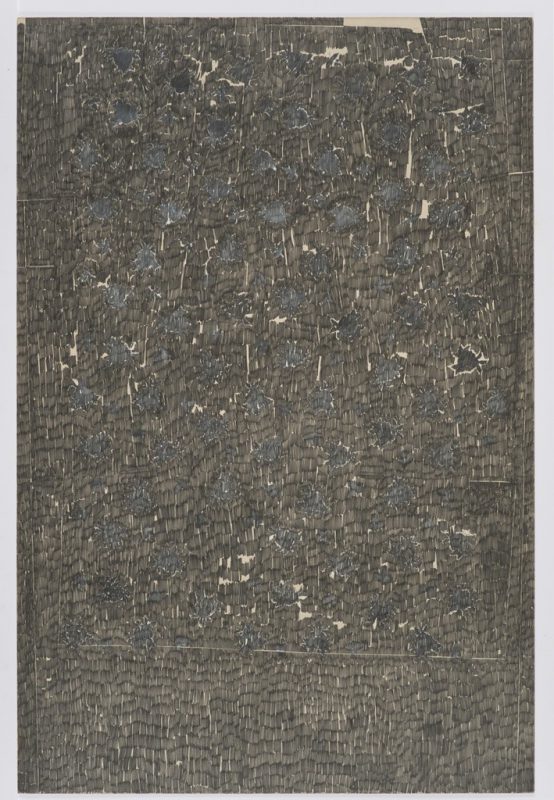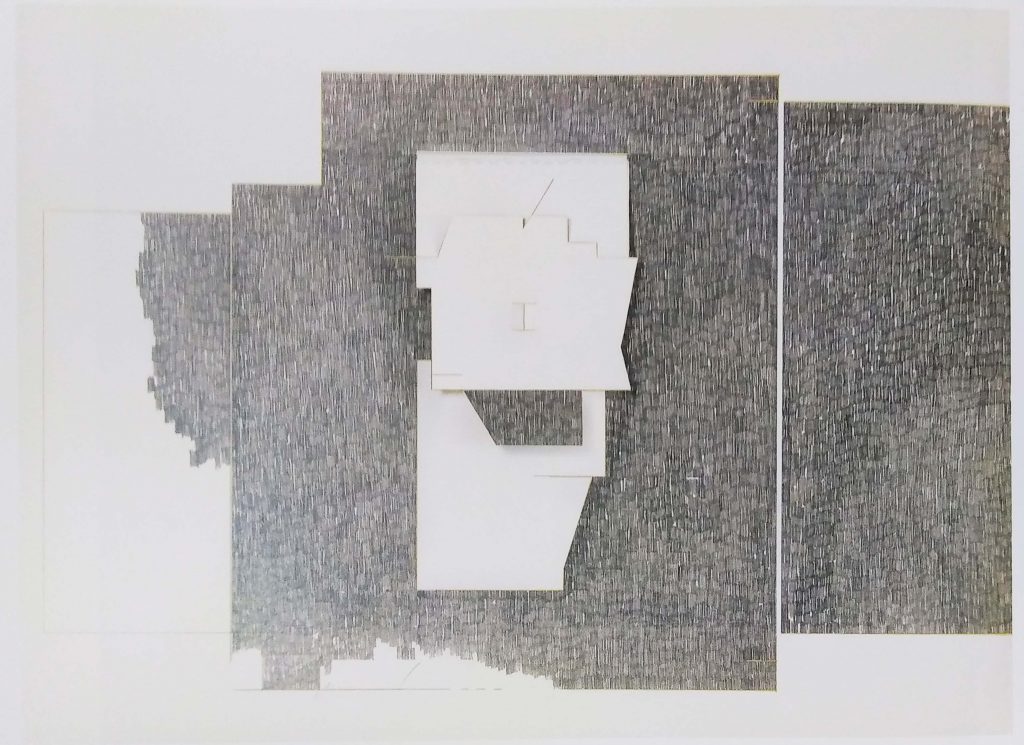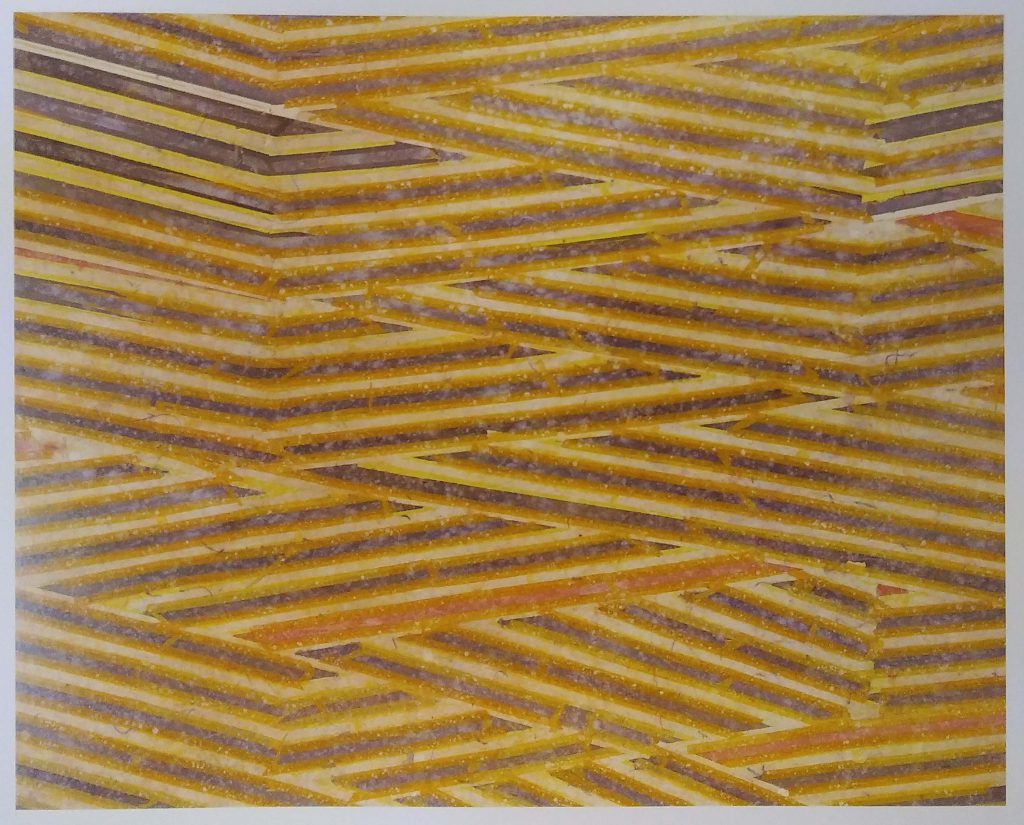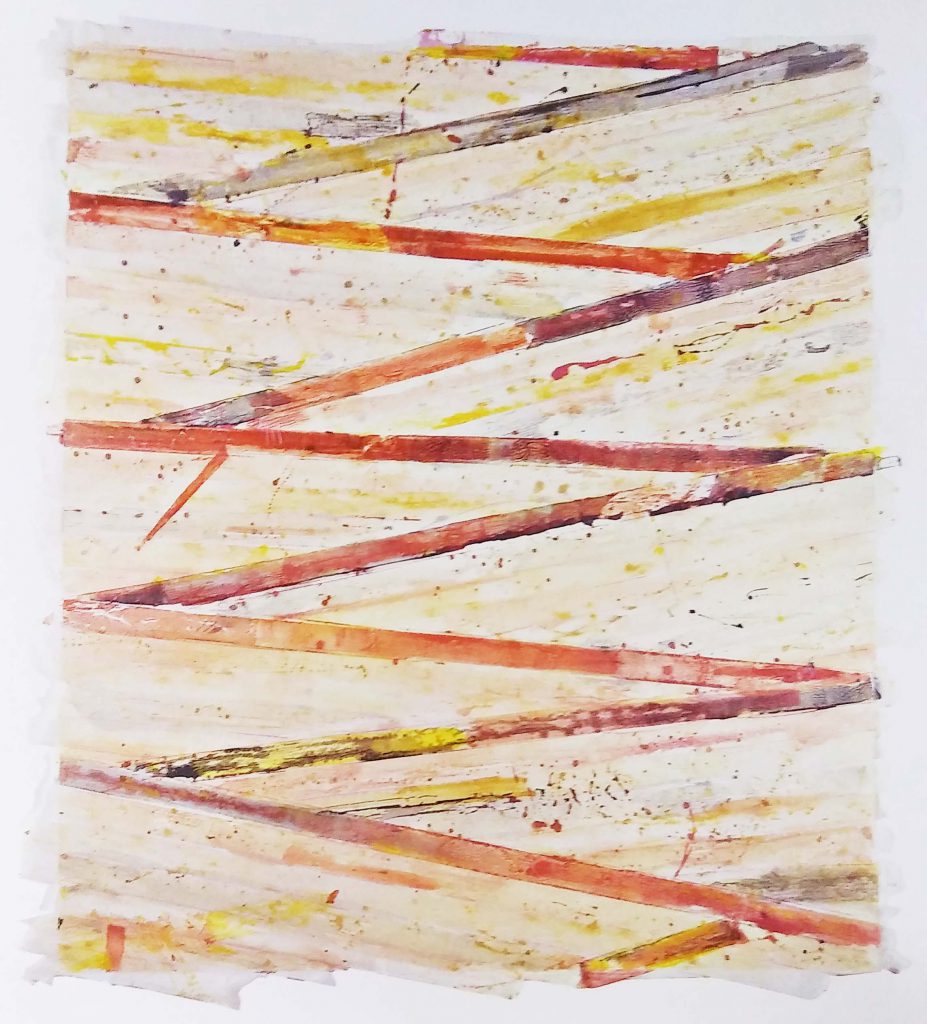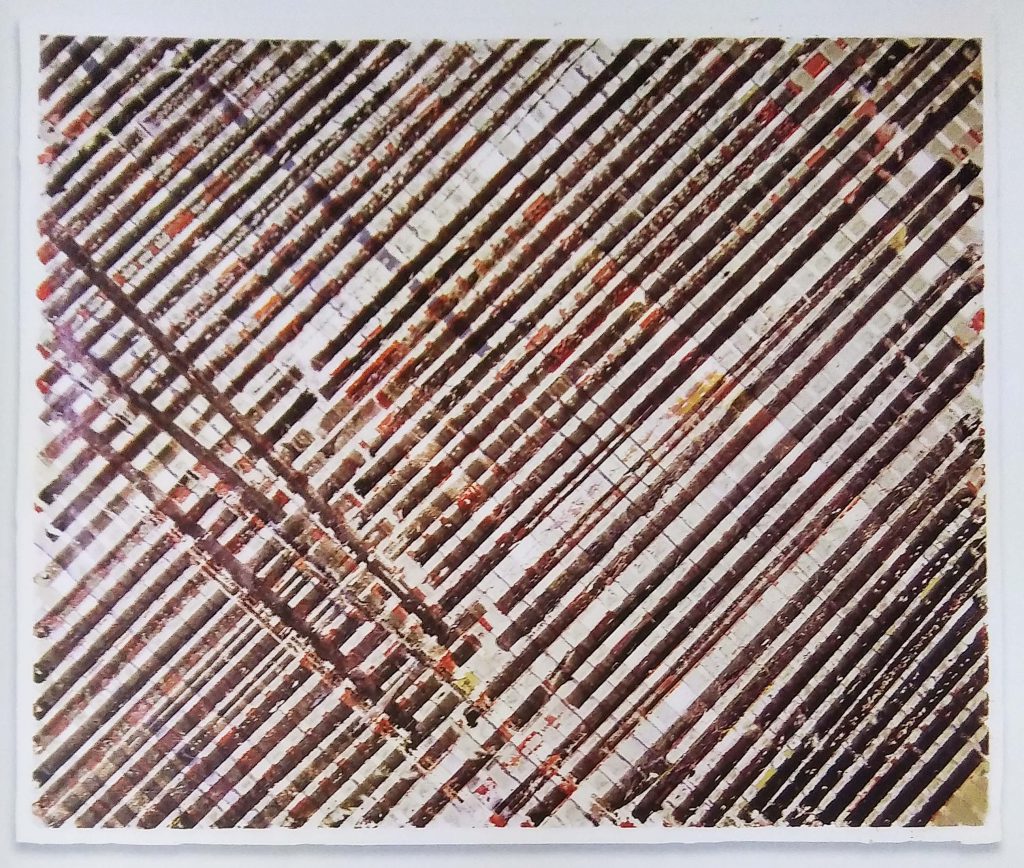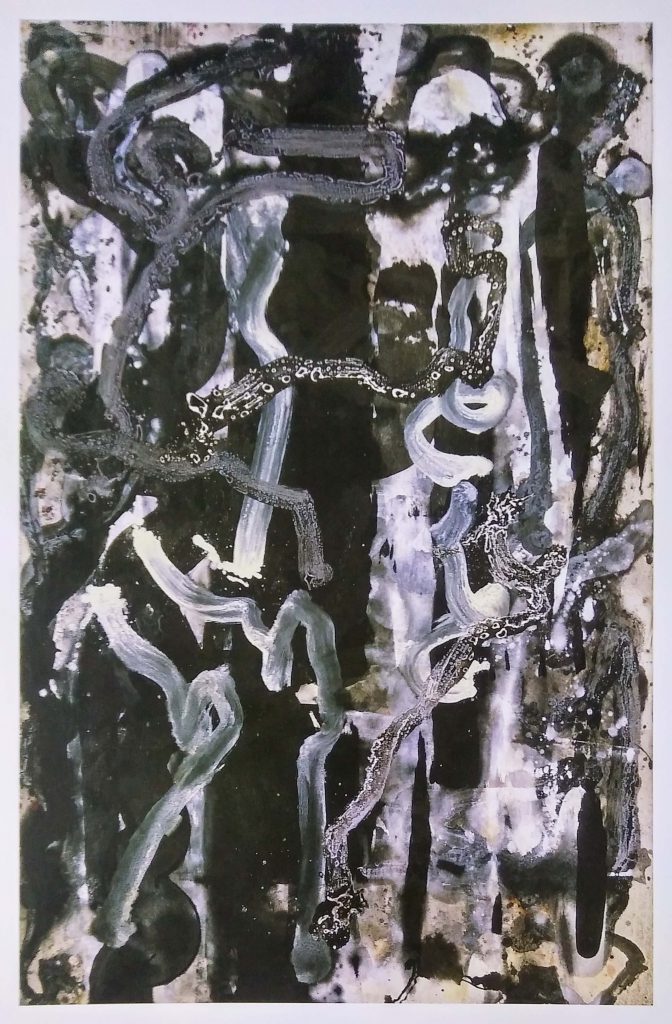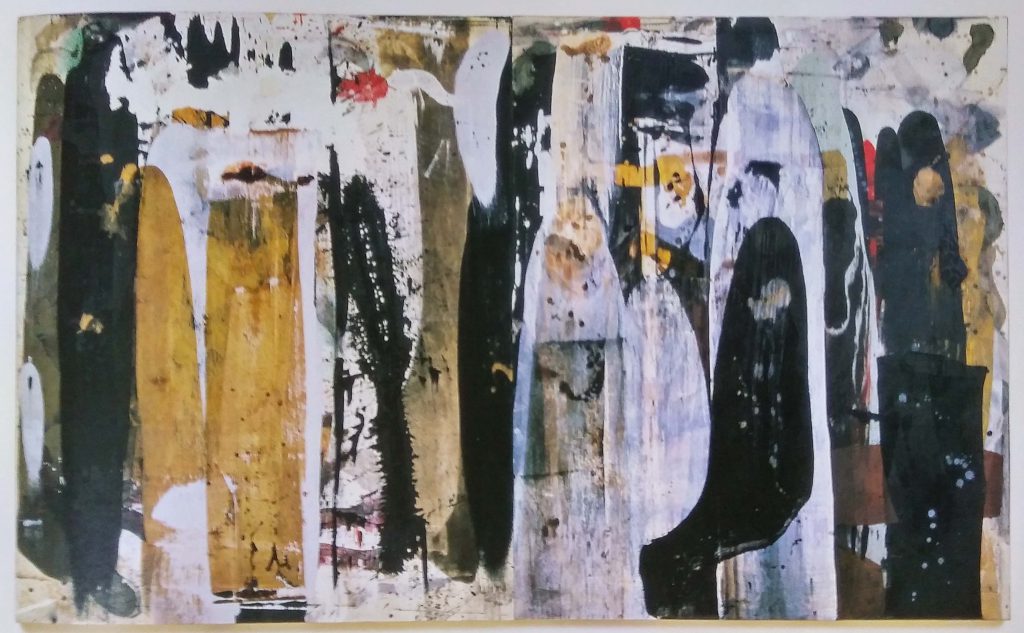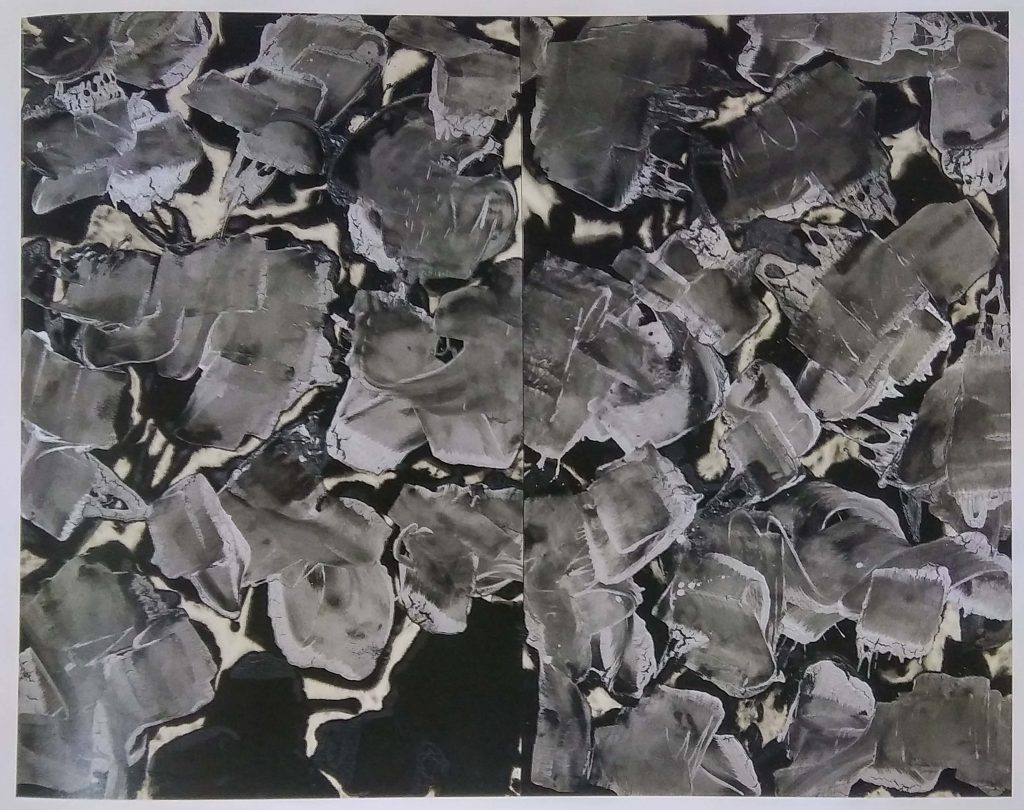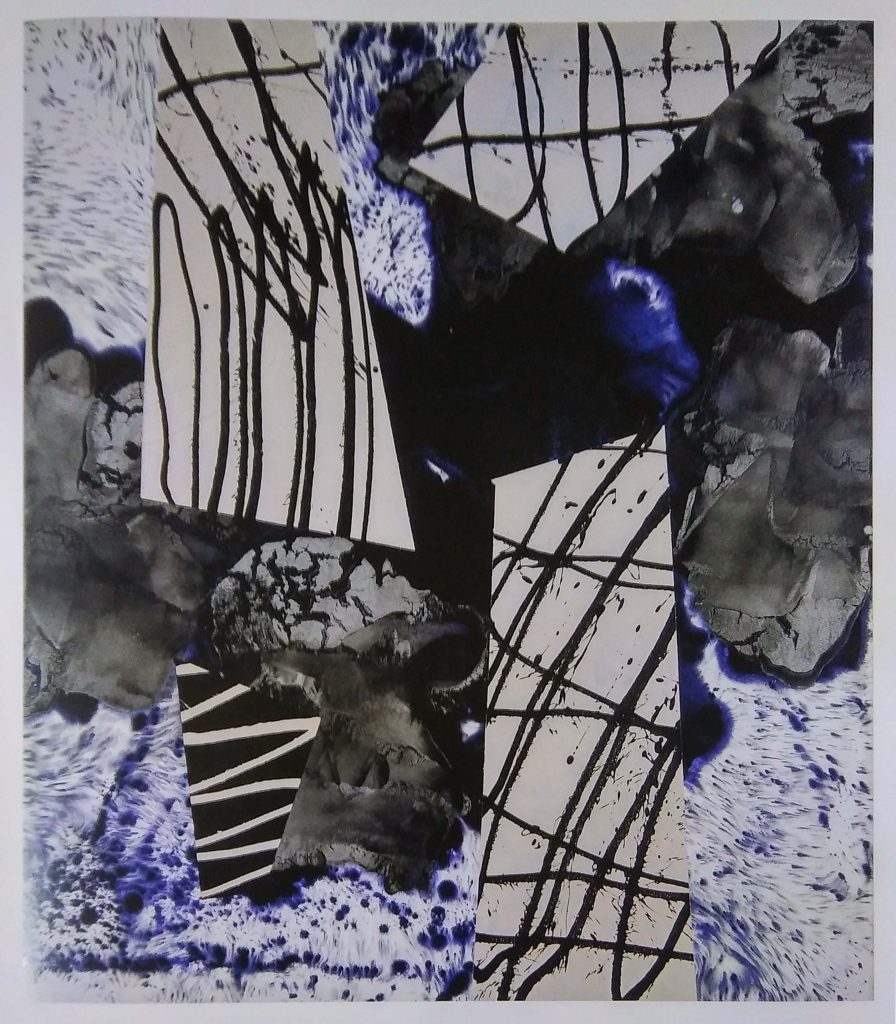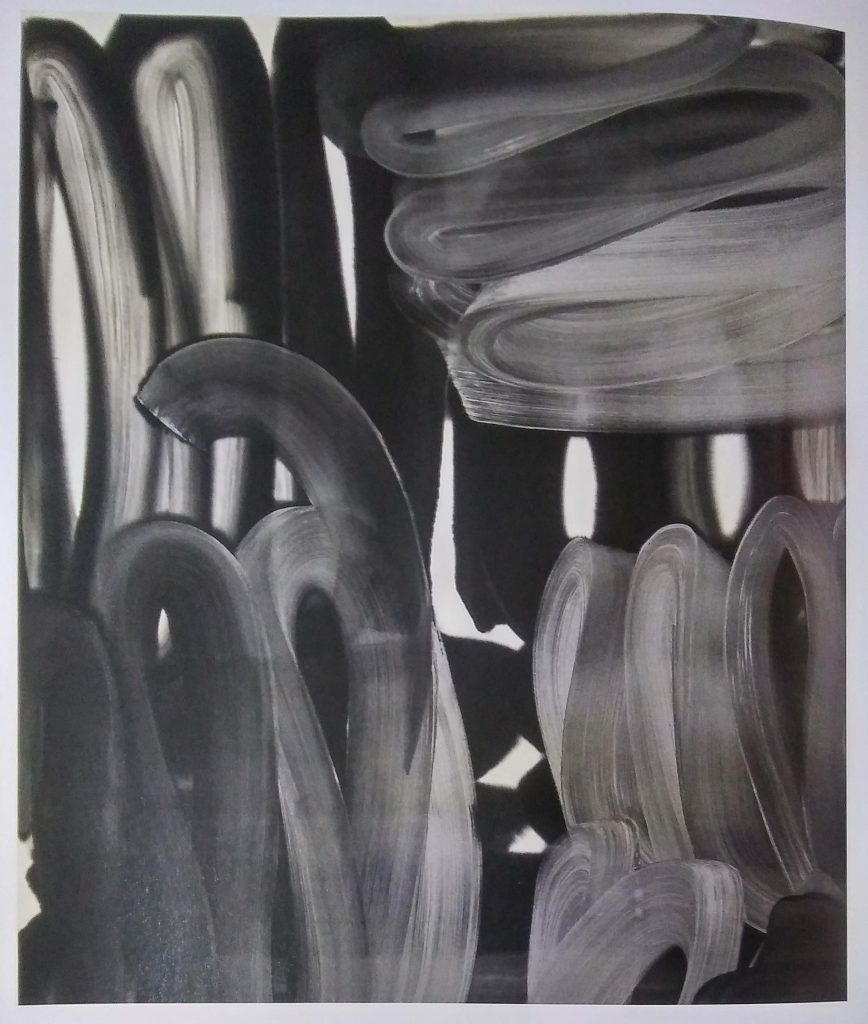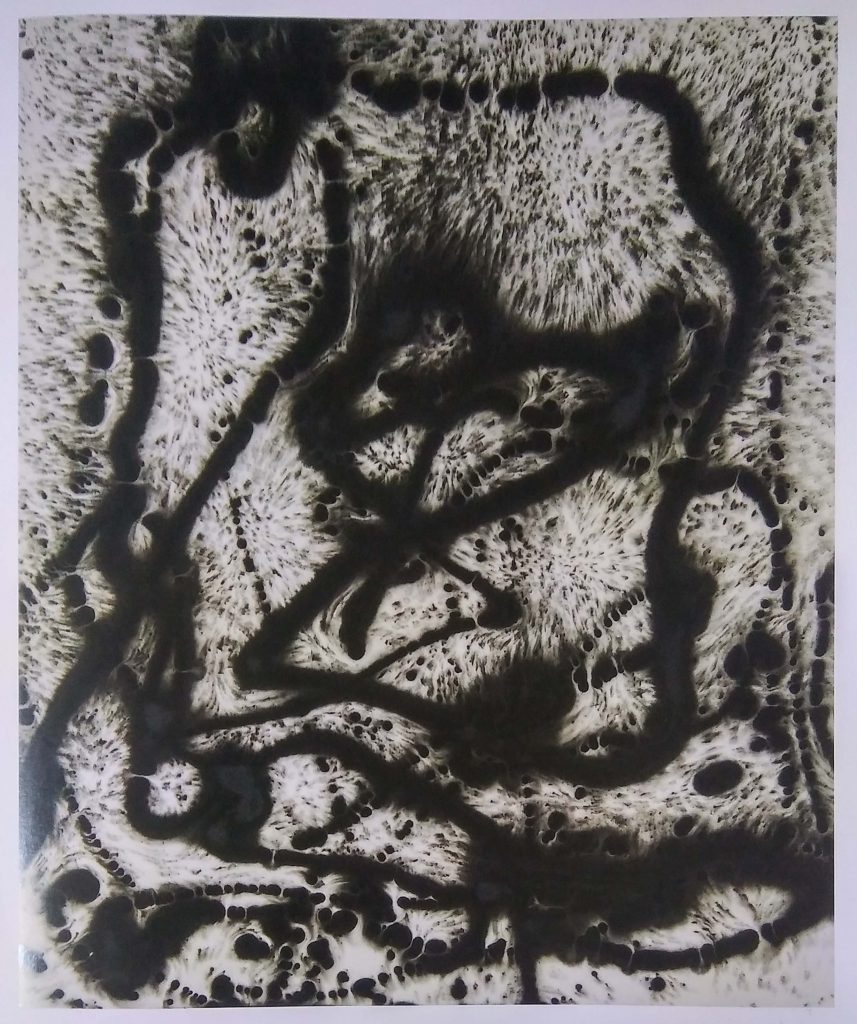At this stage I was still pretty confused with what I wanted to do. So I made multiple patterns with different objects that I found around my home. Thus almost all of them look like ‘fabric prints’, with no actual narrative and composition.

During consultation everyone agreed that this depicts the feeling of Tenseness. To portray the emotion, I used satay sticks dipped in Chinese ink then carefully press it onto the paper at different angles. It looks like war zone with spears sticking out of the ground everywhere or a laser security system. We interpret the diagonal lines as twisted or warp state of mind; something is not right kind of feeling.


I see surprises as an explosive emotion. The shock you feel happens in an instant; then it fades away. The second piece was rejected as it does not fit the description as well as the first.

When I feel regret, I desperately want to turn back time and amend my mistakes. But since there is no such thing as time travelling, the only thing that I could do is patch things up the best I can. However no matter how well you try to fix it, it’ll never be the same again.
I tore a piece of print I made smearing Acrylic paint with a plastic bag. Then paste it onto the strip while purposely leaving empty spaces to be patch up with bigger pieces.

I made this piece with the intention of positive emotions. Using a satay stick, I spread the paint in a wavy motion diagonally. Mixing the black and white, sometime more black and sometimes more white to show the happiness and disappointments in love.

I tried connecting two blotch of paint from different ends to depict attraction. Maybe it is too direct? Too simple? There is no narrative behind it thus it is somewhat boring.


I thought these pieces described Disgust because of the veins and holes in the paint. But others do not agree because of the fluidity of the veins, how gentle it looks and the gradient from the mixed paint.


At first I thought this could show disgust because of the multiple ‘holes’; trypophobia triggering. But I guess the concept is not strong enough because normally we associate bubbles with joy and happy children trying to pop them. I also think the bubbles create a dreamy effect which could also show Tranquility.


These are what I imagine my mind to look like when I feel irritated or annoyed. Being irritated is like hearing this continuous buzzing that would not stop and would keep building up in your head until you burst out in anger. Being annoy is also the same concept but much stronger than being irritated. Both were rejected because of the lack of dynamics, narrative and composition.
Next course of action:
The next step I am going to take is to think about the narrative and composition of the emotions. What is the story behind my strip? How does it describe the emotion? What part of anger do I want to represent in my strip?
Also the use of materials/ medium in my concept. Maybe explore the different kinds of paper? Handmade paper was suggested in the consultation to achieve a very textured paper. For anger perhaps I could just texturize the paper by beating the crap out of it?
Other rejects:
Next Post: https://oss.adm.ntu.edu.sg/ytan149/my-line-is-emo-development/




















